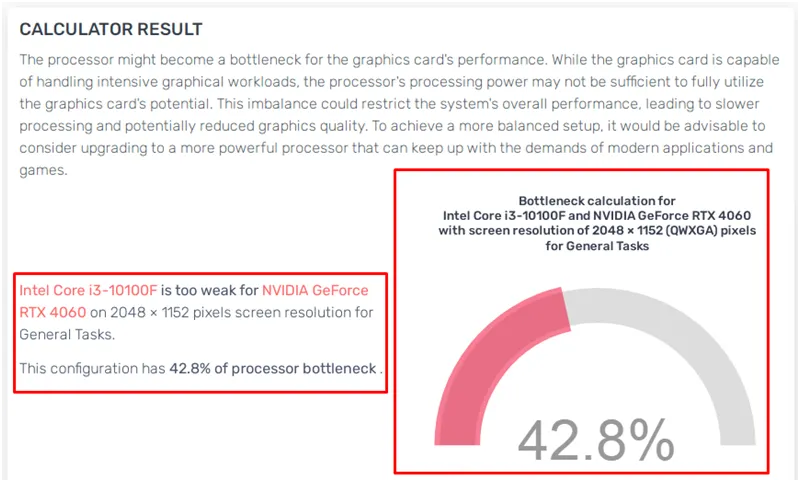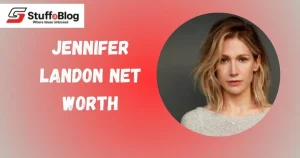Are you facing issues in your decently built PC because it is not performing well? If yes, then it happens when some components of your personal computer are not suitable. As a result, the PC won’t perform at the level it should be working on.
However, when a computer limits the working abilities of hardware installed in it, then it would be called a bottleneck. Don’t worry! If you have a PC bottleneck calculator, then you are free to check its bottleneckness through a calculator.
You can use the Bottleneck Calculator to know if your personal computer is facing any bottleneck issues to troubleshoot it for better performance. Here, I have compiled a guide on this tool, starting from its overview!
What is Bottleneck Calculator?
A Bottleneck Calculator is a tool that is designed to identify a bottleneck in your PC while upgrading or building a new one. It gathers information about your computer’s components from internet sources to allow you to buy.
However, if you have little knowledge about computer components and want to know which components will suit your needs, then this tool is for you. Just add your preference, and whether you want a gaming PC or a workstation computer, you will get your results.
The results will find components that will suit you the best for your needs and requirements to get the most out of your PC. It now provides you with the “Order Now” links for each component that you need to have.
How Does the Bottleneck Calculator Work?
Any component whose specifications are out of proportion with the rest of the system and slow down your computer’s overall performance is a bottleneck. One (or more) unsuitable components slow down the performance of others and cause a performance jam.
On the other hand, if you are going to upgrade or build a new PC, then this tool will help you choose the most suitable components for you. You just need to add your requirements in the blanks, whether for gaming or a new editing system.
A good calculator focuses on your CPU, GPU, RAM, and sometimes storage. For example, a CPU GPU bottleneck calculator evaluates how balanced your processor and graphics card are.
It will find you the most suitable components according to your needs if you have little knowledge of computers. Using a PC bottleneck calculator can save you from a lot of frustration and wasted money.
Let’s Comprehend It Through Examples!
Example 1.
Let’s say you have a good GPU that is working just fine. But at the same time, you have installed a slow CPU on your computer, which is not working properly.
If gaming or professional tasks are your priority, optimizing your PC using a GPU bottleneck calculator ensures smooth performance and higher efficiency.
Since the GPU performs according to the CPU’s instructions, its performance will be compromised. That is because GPU is rendering data much faster than the CPU Bottleneck Calculator can provide.
As a result, the GPU just delays as it waits for the CPU to supply data so it can draw it. In this case, one may argue that the CPU is the performance bottleneck or contributes to one.
Example 2.
Similarly, if you have installed good Random Access Memory (RAM) and a bad hard drive, RAM will not perform at the level it should since the drive cannot analyze the data set faster. In that case, the drive is the bottleneck.
Now, a bottleneck calculator gathers information about your computer components, such as CPU, GPU, RAM, etc., and tells you if any element is imbalanced in performance so that you can take action to fix this performance bottleneck.
A Bottleneck Calculator tool helps people identify the bottleneck component in their PCs. Even people who know little about PC hardware can use these tools. Further, it allows them to know which components will fit them the most so they can have the best performance on time.
How to Use a Bottleneck Calculator?
You are free to use the Bottleneck Calculator for several tasks, such as knowing the bottleneck in your PC or compatible components for your new build. Let’s go through the steps:
Step 1 – Access the Website
First, you’ve got to access the PC Builds website and open their calculator tool to calculate the bottleneck. Accessing the site and looking for the tool can be lengthy.
So, here’s a shortcut for you. Simply search for “Computer Bottleneck Calculator Builds,” and the tool link will appear in the search results. Alternatively, access the calculator at “PC-builds.com/bottleneck-calculator.”
Step 2 – Select Your Hardware Component Specifications
Once you have accessed the tool, you will see different options for selecting your hardware component specifications. This includes selecting you:
- Processor
- Graphics Card
- Screen Resolution
Select the specifications of each of these components and click on “Proceed to Calculate.”
Also, you are free to select the purpose of this calculation from the given options:
- General Tasks
- Processor Intense Tasks
- Graphic Card Intense Tasks
Here, you will get the results according to your supporting components.
Step 3 – Analyze the Results
Once you have received the result, analyze it deeply. This tool gives you the result in the form of both percentage and written data.
As you may see, the tool has indicated that the configuration has a 42.8% processor bottleneck. This or any other tool will also help you get information about your configuration.

Benefits of Bottleneck Calculator
Here, I have described some benefits of using the Bottleneck Calculator.
- Cost-effective: You may save a lot of money. Since you know which part needs an upgrade, you will avoid purchasing unnecessary parts.
- Decision-making: It enables you to make a data driven decision to have the right component for your computer upgradation.
- Technical Assistant: This is helpful for people who do not have much technical knowledge about computers while building a new PC.
Tips and Tricks for Bottleneck Calculator
Here are some useful tips and tricks for the Bottleneck Calculator:
- A Bottleneck Calculation tool offers a wide range of component specifications. This means that it should be able to compare a large range of competent (GPU, CPU, etc.) models.
- Make sure to select the purpose of the bottleneck test you’re about to run. This will give you exact results about the performance imbalance you must identify.
- Relying on only one calculator is not enough. Since they are free, make sure to test your system on multiple calculators to determine authentic results.
- Once you have received the results, consult a professional before upgrading that part of the system.
To Finish Off
A bottleneck may cause a lack of performance in your personal computer while performing certain tasks. Therefore, you are free to use a bottleneck calculator to identify and upgrade the bottleneck. Whether you want to upgrade your PC or just want to change the unsuitable components, then this tool has you covered.
Most of these tools are free and easy to use. I have demonstrated how to use one of them in the above-mentioned section. Besides this, some tips and tricks are also discussed for your assistance. Make sure to read them out before you use the tool.
FAQs
What is the most common bottleneck in PCs?
It’s CPU and GPU bottleneck. These two parts depend on each other. If one underperforms, the others’ performance is also affected.
Can I know the bottleneck without using a calculator?
Yes. You can know the bottleneck without using a calculator. However, you will have to be a little observant. There would be signs of performance lack that will tell you that your system is bottlenecking.
Is a bottleneck harmful to my PC?
A bottleneck isn’t harmful to a PC. It just limits the performance of another part, which can be damaged while trying to match the limit.
Is a bottleneck calculator free to use?
The answer is yes. Most of the bottleneck calculators are free to use.
Are these calculator tools reliable?
You should not consider the results of these tools final. Just think of them as approximate calculations. Do some more research about your hardware before making any decision.











